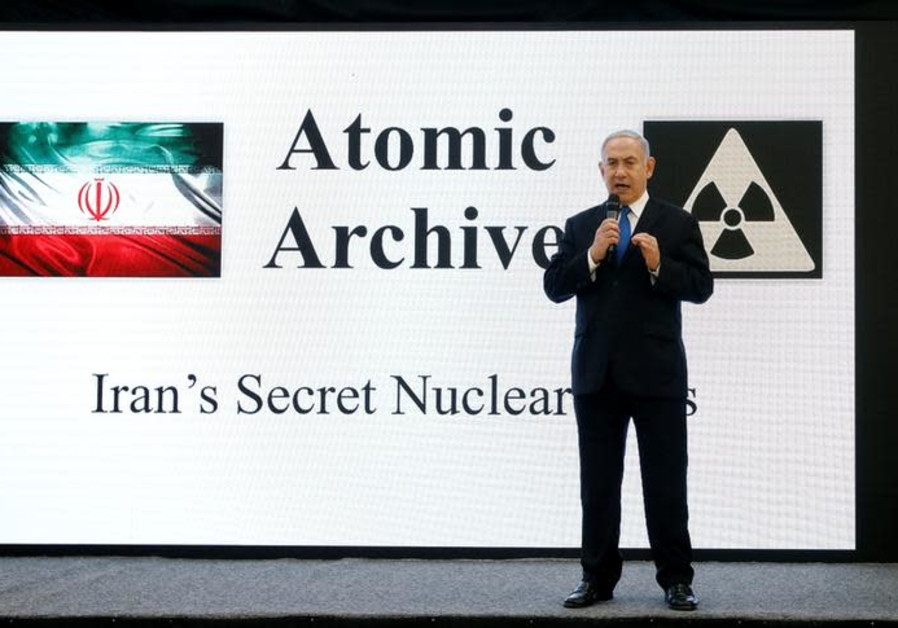The PMO official said that the assigned staffers went through dozens of versions of the prime minister’s slide show “to achieve the largest impact.”

Head of Public Relations in the Prime Minister’s Office Yarden Vatikai disclosed on Wednesday the inside story of how Benjamin Netanyahu’s now famous April 2018 speech, about the Mossad’s appropriation of Iran’s secret nuclear archives, came to be.
Speaking at the Israel Intelligence Heritage and Commemoration Center in Tel Aviv, Vatikai presented what he said was a two month long intense internal debate by a small staff of intelligence staffers and staff from the PMO.
Vatikai described how tactical considerations of choosing what to present at Netanyahu’s speech and how to present it were at least as important as more abstract strategic considerations, in order to have the maximum impact on policy and the public worldwide.
He called Netanyahu’s news conference not only one of the most dramatic news events in years, but one of the most profoundly effective public presentations of intelligence to impact policy in recent years.
Vatikai also describes some of the issues involved in a recent IIHCC article co-authored with IDF intelligence officer Col. “A.”
Both sides of the political spectrum acknowledge that Netanyahu’s speech was a key component for the Trump administration in its decision to pull out of the 2015 Iran nuclear deal and that the issues raised have maintained a certain pressure on Tehran to defend its nuclear record.
The PMO official said that the assigned staffers went through dozens of versions of the prime minister’s slide show “to achieve the largest impact.”
Moreover, he said that there were internal debates between the staff members about what intelligence could be revealed and what needed to be kept secret.
Although the debates can be complex, Vatikai said that often intelligence professionals want to reveal less, and to present what is revealed with more nuance, whereas political officials tend to want to reveal more and with a simpler message for the public to quickly understand and absorb.
Vatikai continued by noting debates about which images to present which would be the most shocking and shake up the public and political decision-makers to accept the main message, that Iran had lied to the world.
He even said that the kind of podium and setup of where Netanyahu stood in relationship to the book cases showing off Iranian intelligence was carefully considered. Eventually, there was a decision to have a skinnier and more transparent podium in order for the prime minister to be freer to move around and interact with the evidence.
Vatikai said that the slide which underlined the words “5 warheads, 10 kilotons TNT yield” and “on a missile” was carefully selected to drive home the overall message of the threat from Iran in one slide.
Netanyahu’s presentation has also led for calls from around the world for the IAEA to looks into the evidence presented.
As reported by The Jerusalem Post
